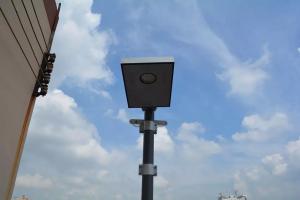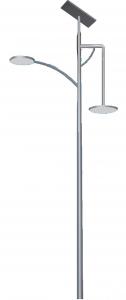Solar Light Posts Outdoor LED Strip Series with SMD 5050 DC12V Double Row Monochromatic
- Loading Port:
- Shanghai
- Payment Terms:
- TT OR LC
- Min Order Qty:
- 100 set
- Supply Capability:
- 30000 set/month
OKorder Service Pledge
OKorder Financial Service
You Might Also Like
Technical parameters: The product is a flexible led Strip with high plasticity, can bend around shapes---fixed on the bumpy surface, easy to install (using a self-3M self adhesive glue) and so on;With a waterproof, high temperature does not change color, long life and other advantages of low voltage;With brightly colored soft light compact size (3 LED lights can form a circuit---can be cut every 3 LEDs) energy efficiency and environmental protection benefits are ideal for neon replacement products (than neon lights saving 70%), is more decorative outline. Making various shapes ideal for lighting.
Emitting light colors: red, yellow, blue, green, white, warm white LED type: SMD3014 LED quantity: 120240 m/m light life: > 50000 hours package: 5 m/roll waterproof level: IP68 working temperature: - 20 ℃ to 50 ℃ working voltage: DC24V plus or minus 5% light Angle: 120 degrees of flexibility
2. Product parameters:
Emitting light colors: red, yellow, blue, green, white and warm white
The LED type: SMD 5050
appearance size: 1000 mm x 12 mm x 2 mm
LED quantity: 120 m/m
Light life: > 50000 hours
Package is installed, 5 m/roll
Waterproof level: IP68
Working temperature: - 20 ℃ to 50 ℃
Working voltage: DC12V plus or minus 5%
Power : 28.8w/M
Light Angle: 120 degrees
Flexible FPC board color: white/yellow emitting light colors: red, yellow, blue, green, white and warm white
3. Solar Panel Images



4. Product features:
1. The low voltage dc 12 v power supply, safe and reliable.
2. Every three leds can form a loop, can be arbitrary along the tangent truncation, no damage to the other part, but also unlimited extension, can be customized according to customer's request all kinds of the length of the article lamp.
3. Use very soft PCB as the base board, can be arbitrarily curved, arbitrary fixed to the concave and convex surface
4. Rich and colorful color has red, green, yellow and blue, can also according to the requirements of various colors
5. General unilateral wire length 0.15 M, connection mode, the length of the wire, can also be made according to the requirements
6. 5 meters per roll disc packaging or arbitrary length of each article
7. The back of the PCB have genuine 3 m glue, convenient paste
8. Supporting power
9. The company's products have passed CE, ROHS and so on many international certification
5.Scope of application:
1. Ultra-thin light box, lighting signs, advertising signs, etc
2. High-end specialty stores, shopping malls and other indoor lighting business atmosphere
3. Entertainment, beauty salon lighting
4. The atmosphere of bars, cafes and other recreational places lighting
5. Arts and crafts light source
6. Used to mark paths and contour, luminous signs, etc
7. Car decoration, etc
6.FAQ
We have organized several common questions for our clients,may help you sincerely:
①What price for each watt?
It depends on the quantity, delivery date and payment terms,
②What is your size for each module? Can you tell me the Parameter of your module?
We have different series of panels in different output, both c-Si and a-Si. Please take the specification sheet for your reference.
③Can you provide the peripheral products of the solar panels, such as the battery, controller, and inverter? If so, can you tell me how do they match each other?
Yes, we can, we have two companies for solar region, one is CNBM International, the other is CNBM engineering Co.
We can provide you not only the solar module but also the off grid solar system, we can also provide you service with on grid plant.
④What is your warranty system?
Our product performance guarantees for 25 years
• 12 years guarantee for workmanship
• Timeliness of delivery
• Quality Products certified (TÜV, UL, CE, ISO)
⑤How do you pack your products?
We have rich experience on how to pack the panels to make sure the safety on shipment when it arrives at the destination.
⑥ Can you do OEM for us?
Yes, we can.
⑦How long can we receive the product after purchase?
In the purchase of product within three working days, We will arrange the factory delivery as soon as possible. The pecific time of receiving is related to the state and position of customers.Commonly 7 to 10 working days can be served.
- Q: Are there solar lights for outdoor staircases or steps?
- Yes, there are solar lights specifically designed for outdoor staircases or steps. These lights are often compact, weather-resistant, and can be easily installed on or near the steps to provide illumination during the nighttime.
- Q: Do solar lights have a built-in sensor for detecting darkness?
- Yes, most solar lights have a built-in sensor known as a photovoltaic cell or a light sensor that detects darkness. This sensor allows the solar light to automatically turn on at dusk or when it gets dark and turn off at dawn or when it gets light again. The sensor is typically located on the top of the solar light, exposed to the surrounding environment, allowing it to sense changes in light levels. This feature not only ensures that solar lights operate efficiently and conserve energy during daylight hours but also provides convenience by eliminating the need for manual operation.
- Q: Can solar lights be used for lighting up outdoor weddings or special events?
- Yes, solar lights can definitely be used for lighting up outdoor weddings or special events. In fact, they are a popular choice for such occasions. Solar lights are extremely versatile and can be easily installed without the need for electrical wiring or outlets, making them ideal for outdoor settings. They are powered by sunlight, which means they can provide continuous illumination throughout the event without the need for regular battery replacements or worrying about power sources. Solar lights are available in various designs and styles, including string lights, lanterns, spotlights, and pathway lights, allowing you to create a beautiful and enchanting atmosphere for your outdoor wedding or special event. Additionally, solar lights are energy-efficient and eco-friendly, as they do not rely on electricity from the grid, reducing your carbon footprint and helping to create a sustainable event. Overall, solar lights are a practical and aesthetically pleasing choice for lighting up outdoor weddings or special events.
- Q: Can solar lights be used for indoor plants?
- Yes, solar lights can be used for indoor plants. However, they may not be as effective as traditional grow lights specifically designed for indoor plant cultivation. Solar lights rely on sunlight to recharge their batteries, so they may not provide sufficient light intensity or the right spectrum of light required for optimal plant growth. It is recommended to use grow lights specifically designed for indoor plants to ensure their healthy development.
- Q: Can solar lights be used for flagpoles?
- Yes, solar lights can be used for flagpoles. They are a popular and eco-friendly choice for illuminating flags at night. Solar lights use energy from the sun to power their LED bulbs, eliminating the need for electrical wiring or batteries. They are easy to install and provide a reliable and cost-effective way to showcase flags on flagpoles.
- Q: Do solar lights have a backup power option during prolonged cloudy days?
- Typically, solar lights lack a backup power option on prolonged cloudy days. They rely solely on sunlight to generate electricity through photovoltaic cells, storing it in rechargeable batteries for nighttime usage. Cloudy days significantly decrease the amount of sunlight available, thus reducing the batteries' charging capacity. Consequently, the lights may not last as long or may not function at all during extended periods of cloud cover. However, some solar lights may possess greater battery capacities or more efficient solar panels, resulting in improved performance during cloudy days. Furthermore, specific models may offer the alternative to connect to an external power source, like an electrical outlet, for charging during unfavorable weather conditions.
- Q: Can solar lights be used in gardens or landscapes?
- Yes, solar lights can be used in gardens or landscapes. They are an eco-friendly and cost-effective lighting solution that harnesses the sun's energy during the day to illuminate outdoor spaces at night. These lights can enhance the aesthetics of gardens or landscapes while providing necessary illumination for safety and visibility.
- Q: Can solar lights be used on trees?
- Yes, solar lights can be used on trees. Solar lights are a great option for illuminating trees as they are self-powered and do not require any wiring. They can be easily installed on the trunk or branches of a tree using straps or clips. Solar lights come in various sizes and designs, allowing you to create a beautiful and unique lighting display on your trees. Additionally, solar lights are environmentally friendly as they harness energy from the sun, reducing electricity consumption. Whether you want to enhance the aesthetics of your garden, create a festive atmosphere, or simply add some extra visibility, solar lights are a versatile and convenient option for tree lighting.
- Q: Can solar lights be dimmed or adjusted for different lighting needs?
- Solar lights have the capability to be dimmed or adjusted to meet various lighting needs. Many solar lights are equipped with adjustable settings that give users the ability to regulate the brightness or intensity of the light. This characteristic proves to be especially beneficial in situations where a softer or less intense illumination is preferred, for example, to create a cozy atmosphere or save energy. Additionally, certain solar lights provide different lighting modes, such as a motion sensor mode or a steady light mode, which can be customized to fit specific requirements. To ensure that the solar light model you possess or intend to buy offers the desired dimming or adjusting feature, it is essential to review the product specifications or consult the manufacturer's instructions.
- Q: Can solar lights be used for outdoor weddings or ceremonies?
- Yes, solar lights can be used for outdoor weddings or ceremonies. They provide a sustainable and eco-friendly lighting option that can create a beautiful and romantic atmosphere for such events. Additionally, solar lights are easy to install and do not require any electrical wiring, making them convenient for outdoor settings.
Send your message to us
Solar Light Posts Outdoor LED Strip Series with SMD 5050 DC12V Double Row Monochromatic
- Loading Port:
- Shanghai
- Payment Terms:
- TT OR LC
- Min Order Qty:
- 100 set
- Supply Capability:
- 30000 set/month
OKorder Service Pledge
OKorder Financial Service
Similar products
Hot products
Hot Searches
Related keywords




























